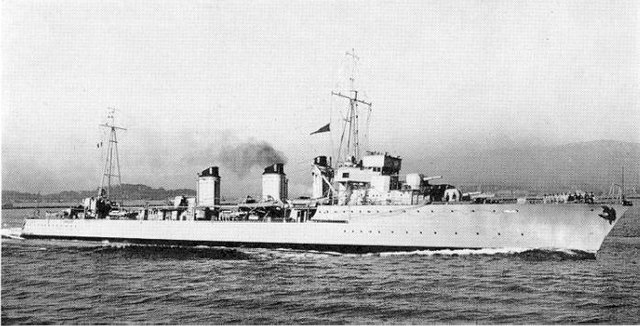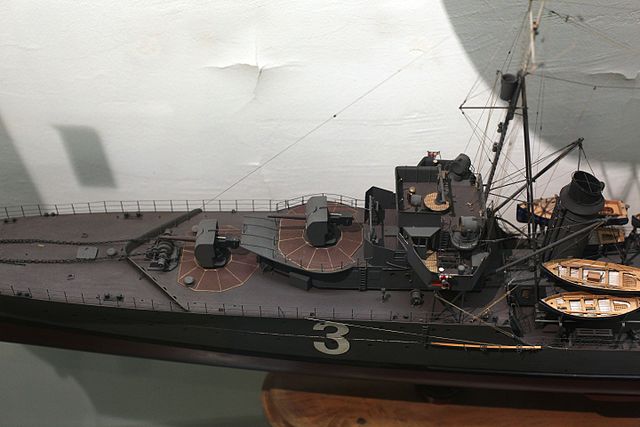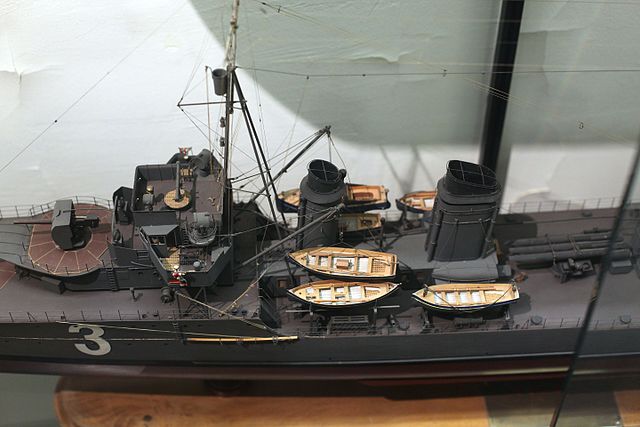The Chacal-class destroyer, sometimes known as the Jaguar class, were a group of six large destroyers (contre-torpilleurs) built for the French Navy during the 1920s. Their primary role was scouting for the battleline. All were named for predators: Chacal means jackal, and the other five were named for big cats.
Chacal before 1940
Forward 130 mm guns in superfiring single mounts 130 mm (5.1 in) Mle 1919 guns, main telemeter and searchlights on top of the bridge
Forward triple torpedo tube behind the funnel
Mid-section, with the middle 130mm gun, two anti-air canons de 75 mm modèle 1924, and rear torpedo tubes
In naval terminology, a destroyer is a fast, maneuverable, long-endurance warship intended to escort
larger vessels in a fleet, convoy, or carrier battle group and defend them against a wide range of general threats. They were originally conceived in 1885 by Fernando Villaamil for the Spanish Navy as a defense against torpedo boats, and by the time of the Russo-Japanese War in 1904, these "torpedo boat destroyers" (TBDs) were "large, swift, and powerfully armed torpedo boats designed to destroy other torpedo boats". Although the term "destroyer" had been used interchangeably with "TBD" and "torpedo boat destroyer" by navies since 1892, the term "torpedo boat destroyer" had been generally shortened to simply "destroyer" by nearly all navies by the First World War.
USS Arleigh Burke, the lead ship of her class of guided-missile destroyers.
The destroyers of the US Navy's Zumwalt-class, pictured here sailing with a Littoral combat ship (LCS) are the longest and heaviest destroyers currently in service.
The Italian Caio Duilio, belongs to the Horizon-class of Franco-Italian designed first-rate frigates.
Fernando Villaamil, credited as the inventor of the destroyer concept, died in action during the Battle of Santiago de Cuba in 1898.








